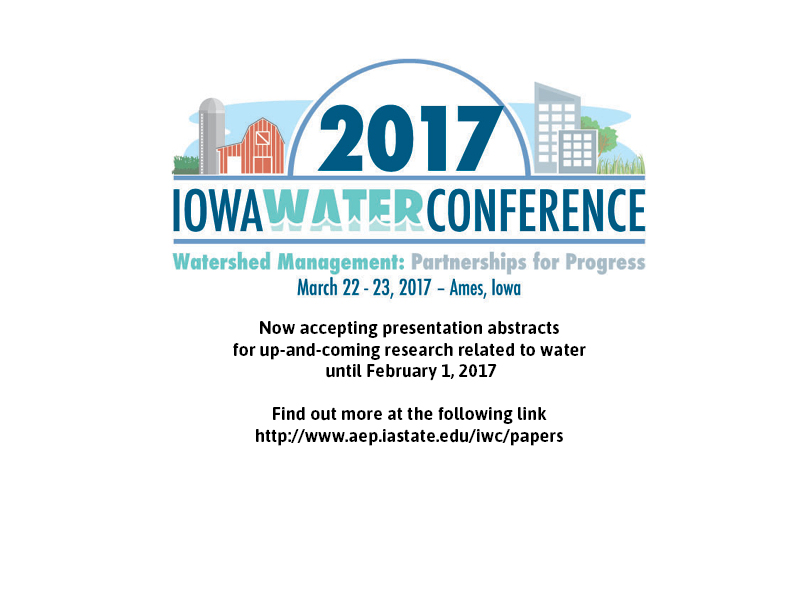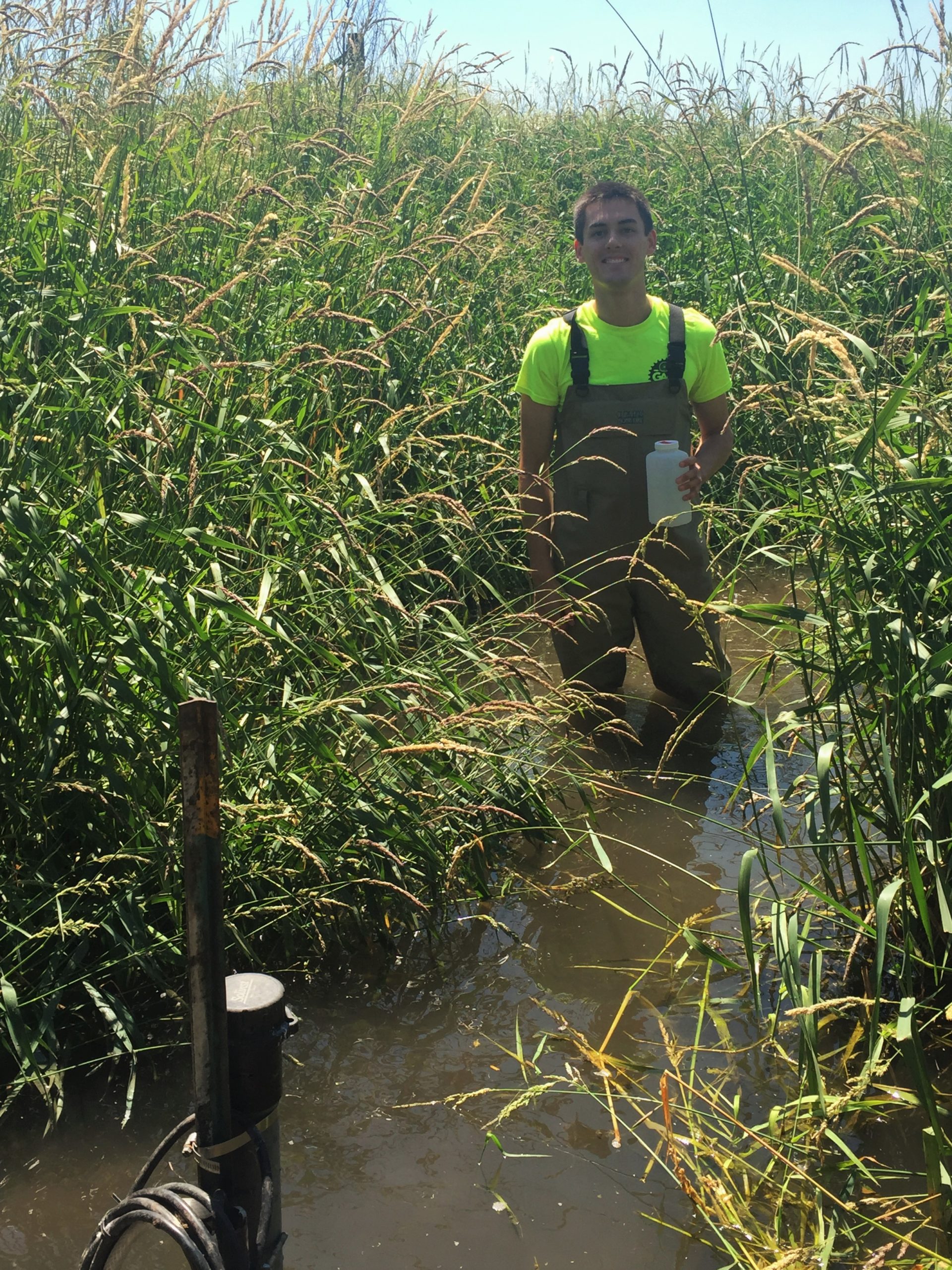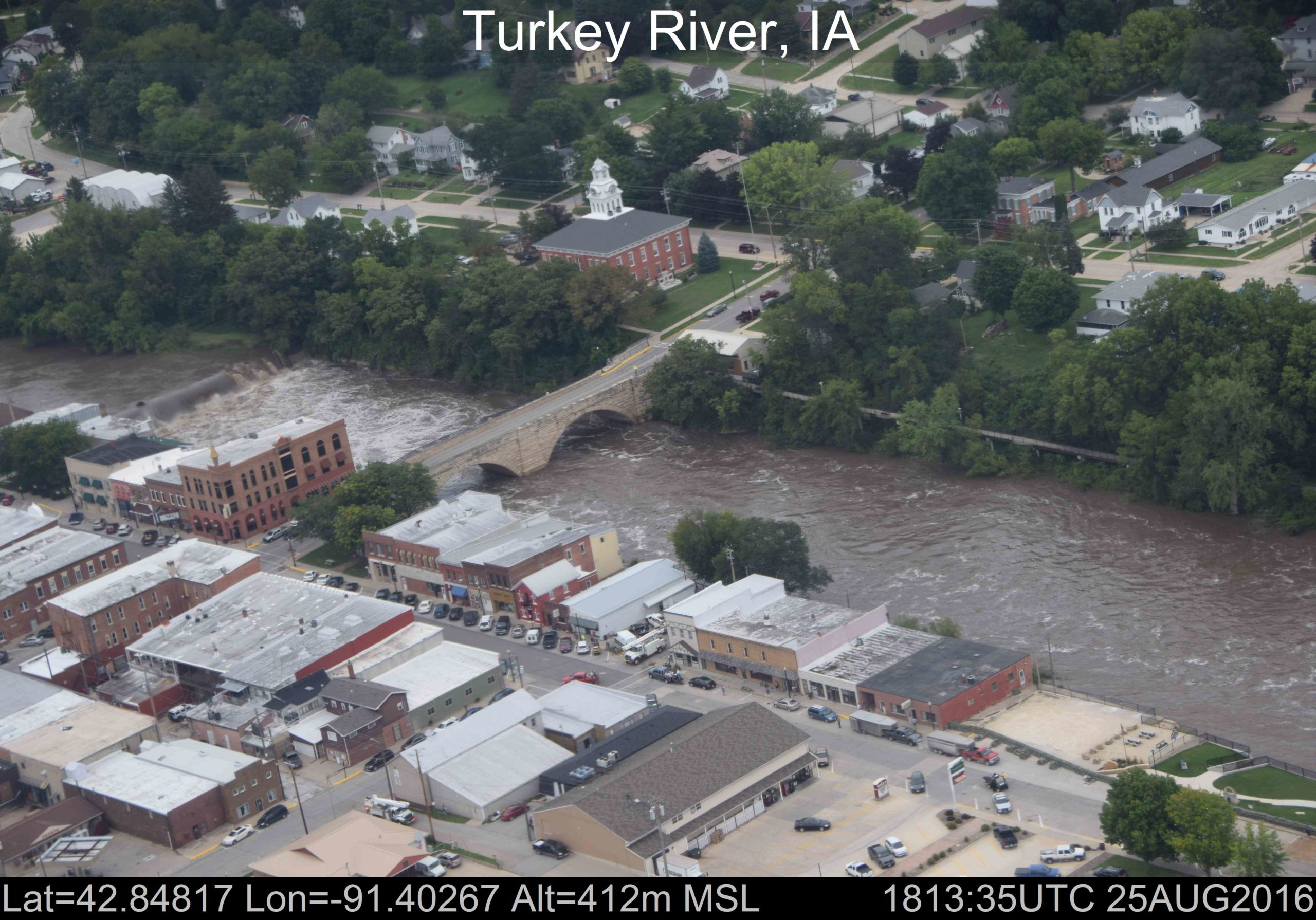When Gabriele Villarini heard the news that he had been chosen to receive the American Geophysical Union’s James B. Macelwane Medal, this normally unflappable researcher got pretty excited.
Continue readingCurrent Research track now open for the 2017 Iowa Water Conference
The Iowa Water Conference Planning Committee invites researchers from around the state to submit an abstract to present at the 2017 Iowa Water Conference in the Current Research track.
Continue readingWater Resources Research National Competitive Grants Program Now Open
Funding alert – the National Institutes for Water Resources in conjunction with the US Geological Survey has issued their call for proposals for the 2017 104(g) National Competitive Grants program.
Continue readingOut in the Field in the Miller Creek Watershed
Throughout my time in Iowa, I would find myself at a field day or conference looking at a graph showing nitrate levels in water. Before volunteering with the Miller Creek Watershed Project, I saw this kind of graph as a series of data points along an undulating line without a concrete connection to the landscape. I drew conclusions about tillage and other land management practices, about weather, about the planting, growing, and harvest seasons, and how this all relates to water. I did not see how these data points, when taken together, tell a story about what is happening in a watershed.
Continue readingCedar River Watershed Coalition Meeting Recap
On Friday, October 29, I had the good fortune of heading northeast to Parkersburg, Iowa for the Cedar River Watershed Coalition’s Fall 2016 meeting. This group has been convening since February of 2010, and I’ve made it to a few meetings in my time at the Iowa Water Center.
Continue readingGet to know the Prairie STRIPS Project
Two weeks ago, the Iowa Water Center staff attended a lecture on a study conducted with the Iowa State University Prairie STRIPS Project. Eduardo Luquin Oroz, graduate student at the University of Wageningen, presented results from examining the sediment deposition at the sites associated with this project as well as the strip width effects on sediment deposition. After leaving the presentation, the above quote immediately entered my mind.
Continue readingMonitoring in the Black Hawk Lake Watershed
Black Hawk Lake is an important recreational resource in Iowa. Recently, the lake has had high levels of algae and turbidity. High levels of algae is problematic because it inhibits the natural function of aquatic ecosystems. Turbidity, or the suspension of particles within a water body, also has a negative impact on water quality. The cloudiness within water systems can affect light penetration and can also reduce the volume water systems can hold, and therefore, reduce the space that aquatic habitat can live in. With support from Iowa Department of Natural Resources and other funding sources, such as the Iowa Water Center, we are monitoring the water quality at three sites in the Black Hawk Lake watershed. This is with the goal of determining the effectiveness of strategies used to address the algae and turbidity problems.
Continue readingA Weekend of Algae
Over September 9-13, our new ISU PhD student Tania Leung and I traveled to northwest Iowa to the Lakeside Laboratory. Our goals at Lakeside were twofold: to collect preliminary data on our Iowa Water Center funded project in order to plan our field campaign for summer 2017, and
to participate in the Phycological Research Consortium (PRC).
Introducing a New Member to the Iowa Water Center Team
Hanna Bates joined the Iowa Water Center at the end of August as the Program Assistant. In this position, she will administer our grants program, assist in planning our education and outreach events, and assist in facilitating the relationship between water-related researchers and the public.
Continue readingWhen it comes to water…
From Melissa Miller, Iowa Water Center Associate Director
What a difference a week makes. Last Friday, my family and I made a lunch and relaxation stop in Elkader on our way to Wisconsin for a weekend getaway. My girls love water, so we walked over the Keystone Bridge for a good look.

Hana, 3, and May, 5 pose near the Turkey River in Elkader on 8/19/16.
Just a week later, Elkader and other Northeast Iowa residents are dealing with severe flooding from torrential downpours earlier in the week that dumped as much as 8″ of rain in some areas, causing damage to homes, businesses, and even killing one person swept away in the flash floods. Some residents had to evacuate their homes and take shelter elsewhere (including fish!). The water that makes these communities peaceful, beautiful places to live and visit can also pose severe challenges.
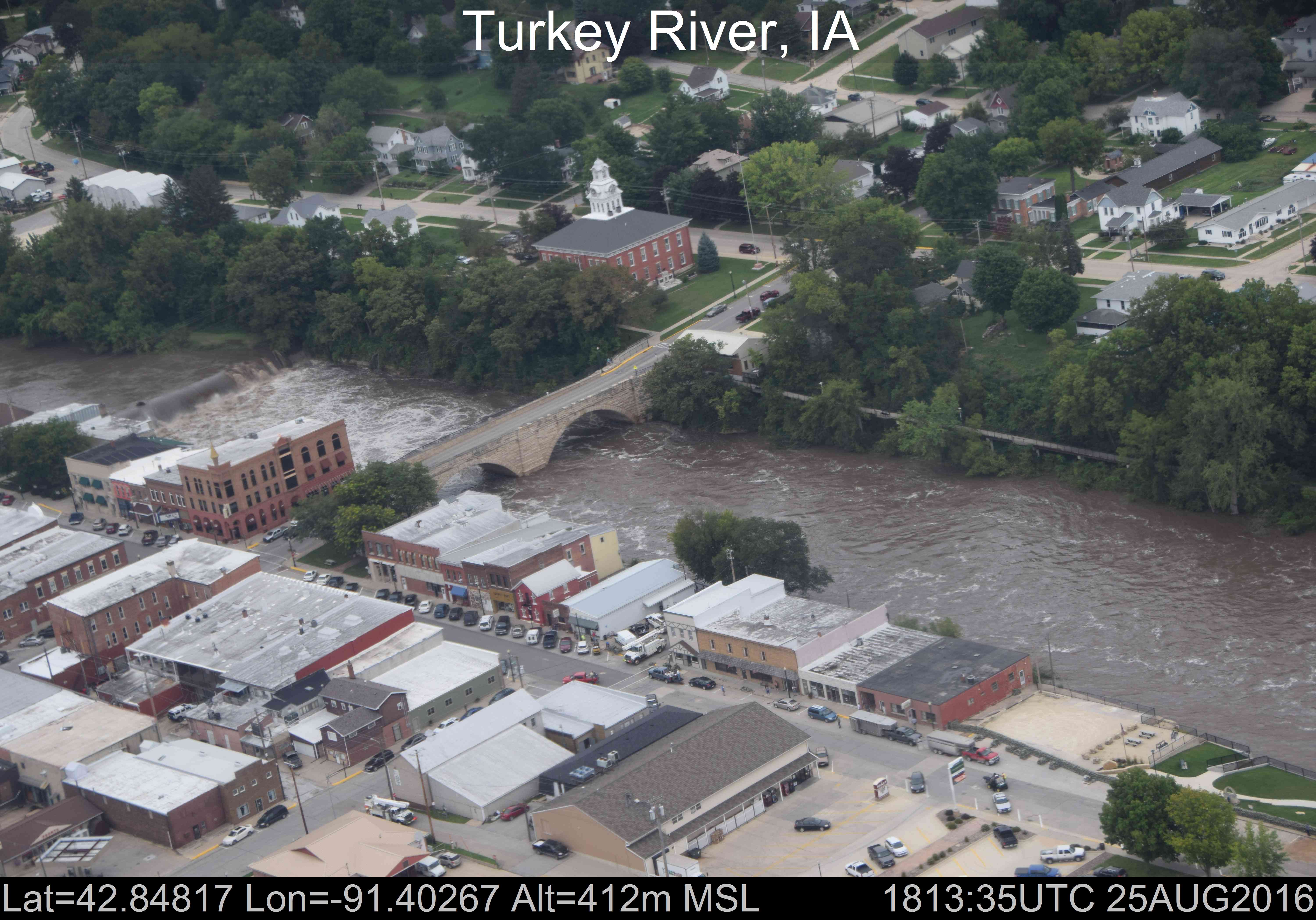
Flooding of the Turkey River in downtown Elkader as taken by NOAA’s National Operational Hydrologic Remote Sensing Center’s Airborne Snow Survey airplanes.
This storm is a solemn reminder of the power of water and the importance of studying it. Our seed grant RFP will be released soon, and this year we are partnering with other Water Resources Research Institutes in the Mississippi and Ohio River Basins to share knowledge so that we’re advancing our understanding together. In addition, the Iowa Watershed Approach has already begun work in communities to help address flood and water quality risks and increase community resiliency to events like the ones this week. Related to flooding, up-to-date flood information is available through the Iowa Flood Information System (IFIS).
IWC’s overarching goal is to improve management of water resources. “Management” might not be the best term, because in many cases, water (and nature) does what it will. There’s a parallel between “managing” water and “managing” children – no matter what you want out of it, the true nature of the water (and the child) will always rise up.
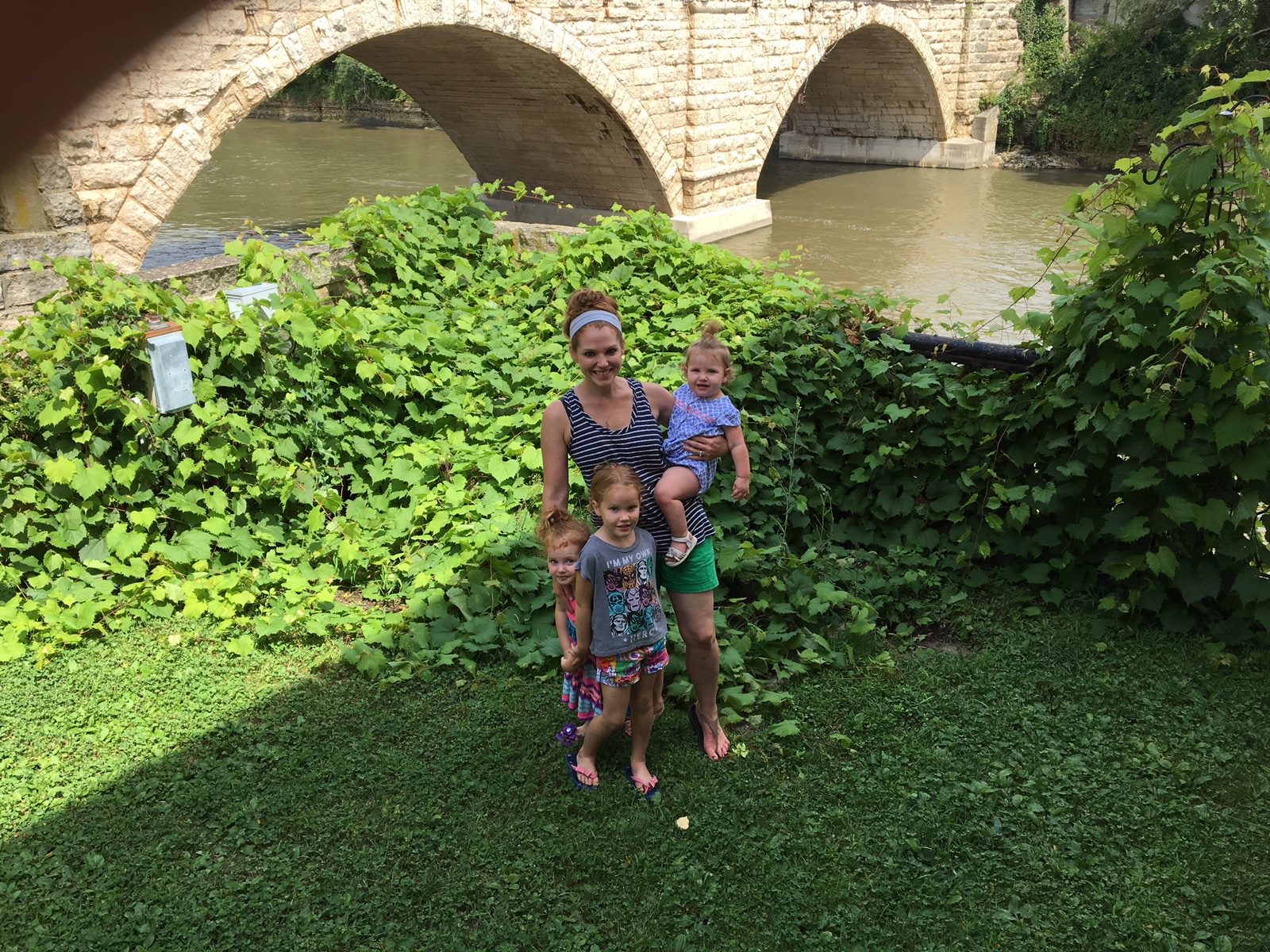
One of many attempts at a “nice” family picture at the Keystone Bridge. Getting kids to look at the camera with serene smiles can be as difficult as telling a river or a rain cloud exactly where to run or when to empty.
